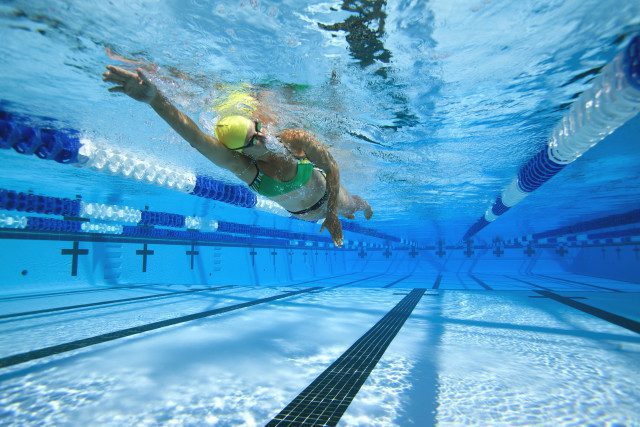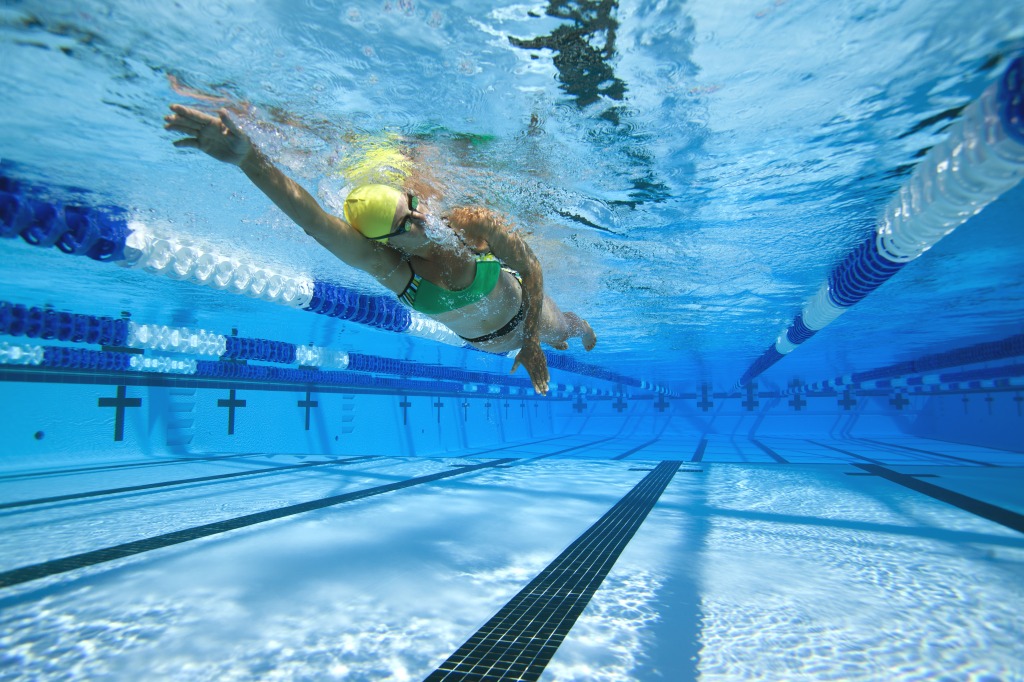Five fast swimming tips

Advance Your Form – Five Tips to Swim Faster
by Ayesha Rollinson
1. Join a masters swim club A swim team will add consistency, varied workout intensities, competition and technical feedback to your swim training. These four elements are crucial to becoming a faster swimmer. Triathletes should look for a masters swim team that is predominantly freestyle-based and which swims at least two times per week for an hour. Look for a coach who has experience in open water and tailors the program to a triathlete’s race season.
2. Get your freestyle stroke analyzed An effective way to correct technique is to have your stroke videotaped and analyzed by an experienced swim technician. You can increase the effectiveness of one of these sessions by repeating the process with the same, trusted, technician. You will only know whether you have integrated the changes from the analysis if you are videotaped a second time for comparison. Too often what we think we look like and what we actually look like in the water are vastly different.
3. Attend a swim training camp Few triathletes have experienced a swim-specific training camp, but the payoff can be invaluable. Most athletes are surprised at the distances and speeds they can achieve when pushed to complete new training loads. Many swim training camps offer video and other forms of stroke analysis. Although it is recommended to take the time to focus on swimming, many swim camps provide opportunities to run on your own.
4. Join an open water swim training group The skills, confidence, mental focus and muscular strength needed to swim fast in a triathlon are quite different than those required for good pool swimming. Pools are controlled environments with a fixed temperature, black lines, lane ropes and a pace clock. Open water has none of these, but it does have a long list of things that will slow you down. If you are training for an early or late season triathlon and can’t get into the
open water before your race, ensure that you are practising open water skill drills including: sighting, head up drills, continuous swimming (not pushing off walls), sculling, swimming with eyes closed and drafting. If you don’t have access to open water, seek out a 50 m or endless pool to decrease resting at the walls and occasionally wear your wetsuit in the pool to get used to it.
5. Swim in a thin, straight line Work on your body position, both vertical and horizontal, throughout the year. The goal is to create the smallest hole possible in the water. If your legs sink when not using a pull buoy, or if they move frantically from side to side when using one, you are wasting a lot of energy dragging your body through the
water. Getting your stroke videotaped and analyzed could help you swim “thinner.” Learning how to sight effectively will ensure you don’t waste energy or swim farther than your competition. Ensuring that your swim stroke is even and that you aren’t veering to one side or the other should also result in improved times.

